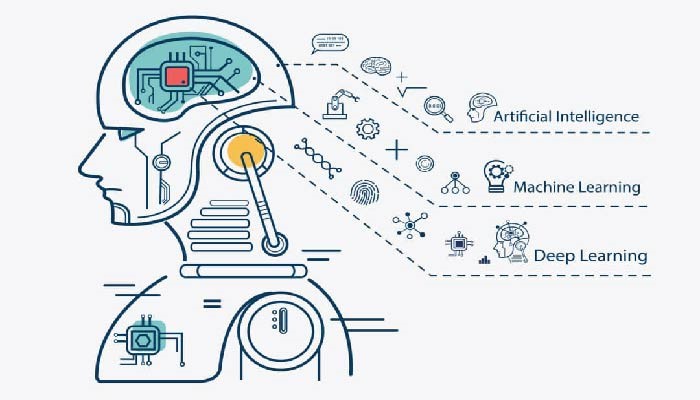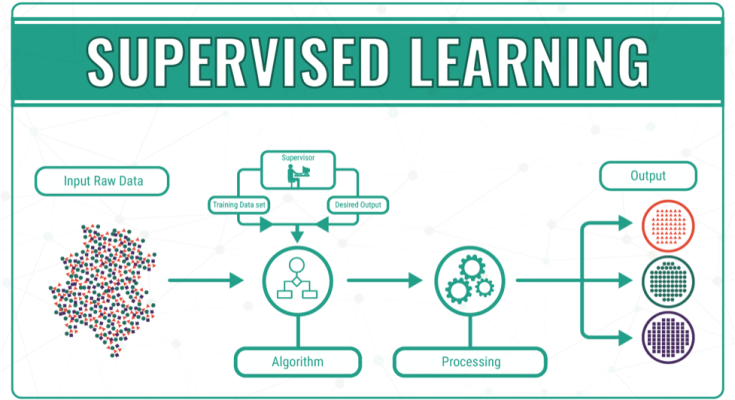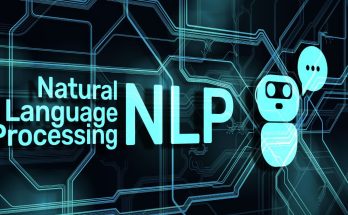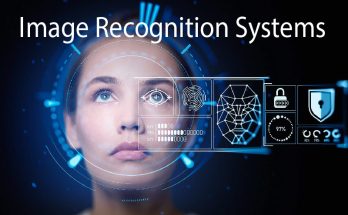AI Supervised Learning: Unraveling the Foundations and Advancements in Intelligent Training
Welcome to the fascinating world of AI Supervised Learning, where machines learn from examples and data to make predictions and decisions. Imagine a realm where algorithms are like diligent students under the watchful eye of a wise teacher, absorbing knowledge and honing their skills. In this blog post, we will delve into the foundations, advancements, applications, benefits, ethical considerations, and future implications of AI Supervised Learning. Let’s embark on this enlightening journey together!

Understanding the Foundations: What is Supervised Learning?
In the realm of AI, supervised learning serves as a fundamental building block. It involves training an algorithm using labeled data to make predictions or decisions. Think of it as a teacher guiding a student by providing examples and answers to learn from.
The core concept revolves around the idea of teaching machines to map inputs to outputs based on patterns found in data. Through this process, models are created that can generalize well to new, unseen data points.
Supervised learning algorithms can be categorized into regression and classification tasks depending on the nature of the output variable being predicted. Regression predicts continuous values while classification deals with discrete categories.
By continuously iteratively adjusting parameters based on feedback received during training, supervised learning models strive to minimize errors and improve accuracy in predicting outcomes. The key lies in finding the right balance between bias and variance for optimal performance.
The Importance of Data in Supervised Learning
Data plays a crucial role in the realm of AI supervised learning. It acts as the fuel that powers intelligent systems to make accurate predictions and decisions. Without high-quality data, machine learning algorithms would be akin to a ship without a compass.
In supervised learning, labeled data is used to train models by showing them examples of inputs paired with their corresponding outputs. This process allows algorithms to learn patterns and relationships within the data, enabling them to generalize well on unseen instances.
The quality and quantity of training data directly impact the performance of supervised learning models. Clean, diverse, and representative datasets lead to more robust and reliable AI systems. On the other hand, biased or insufficient data can result in inaccurate predictions and flawed outcomes.
Moreover, continuous access to updated datasets is vital for ensuring that AI models stay relevant and effective over time. As industries evolve and trends shift, having access to fresh data becomes imperative for maintaining model accuracy.
Key Techniques and Algorithms Used in Supervised Learning
Supervised learning employs various key techniques and algorithms to train models on labeled data, enabling them to make predictions based on patterns. One fundamental technique is regression, where the algorithm predicts continuous values. Classification, another essential technique, assigns labels to input data points based on predefined categories.
Decision trees are popular algorithms that mimic human decision-making processes by splitting data into nodes representing features. Support Vector Machines (SVM) work well for both linear and non-linear classification tasks by finding the optimal hyper plane that best separates different classes in the feature space.
Ensemble methods like Random Forest combine multiple models to improve accuracy and robustness. Neural networks, particularly deep learning architectures such as Convolutional Neural Networks (CNNs) and Recurrent Neural Networks (RNNs), have revolutionized supervised learning with their ability to learn intricate patterns from vast amounts of data.
Advancements in Intelligent Training: from Traditional to Deep Learning Approaches
In the realm of AI supervised learning, advancements in intelligent training have been significant. Traditional approaches relied on handcrafted features and algorithms to make predictions based on labeled data. This method worked well but had limitations in handling complex patterns.
With the rise of deep learning, a subset of machine learning inspired by how the human brain works, a new era emerged. Deep learning models can automatically learn features from raw data through multiple layers, allowing for more intricate pattern recognition and decision-making capabilities.
These deep learning approaches have revolutionized various industries such as healthcare, finance, and marketing. They have enabled breakthroughs in image recognition, natural language processing, and autonomous driving systems.
As technology continues to evolve rapidly, we can expect further innovations in intelligent training methods that push the boundaries of what AI supervised learning can achieve. The future holds endless possibilities for applying these advanced techniques to solve complex real-world problems with unprecedented accuracy and efficiency.
Applications and Benefits of AI Supervised Learning
AI supervised learning has revolutionized various industries by enabling machines to learn from labeled data and make accurate predictions. One significant application is in healthcare, where AI can assist in diagnosing diseases based on medical images or patient records with high precision. This technology also plays a crucial role in financial services by detecting fraudulent activities and optimizing investment strategies through predictive analytics.
Moreover, AI supervised learning enhances customer experiences through personalized recommendations in e-commerce platforms, leading to increased sales and customer satisfaction. In the field of autonomous vehicles, this approach enables cars to recognize objects on the road and make real-time decisions for safe driving. Additionally, AI-driven virtual assistants like Siri or Alexa utilize supervised learning to understand natural language queries and provide relevant responses promptly.
The benefits of AI supervised learning are vast – it improves efficiency, reduces human errors, boosts productivity, and opens up new possibilities for innovation across diverse sectors. As this technology continues to evolve rapidly, its applications will only expand further into uncharted territories with promising outcomes yet to be discovered.
Ethical Considerations and Future Implications
As AI supervised learning continues to evolve, ethical considerations and future implications play a crucial role in shaping its trajectory. One of the main concerns is bias in data, which can lead to discriminatory outcomes if not addressed proactively. It is essential that algorithms are trained on diverse and representative datasets to mitigate this issue.
Moreover, the transparency of AI decision-making processes raises questions about accountability and responsibility. As these systems become more sophisticated, ensuring they remain interpretable becomes paramount for user trust and regulatory compliance. Striking a balance between innovation and ethics will be key in navigating the complex landscape of AI technology.
Looking ahead, advancements in AI supervised learning hold immense potential for revolutionizing various industries, from healthcare to finance. However, it is imperative that we continue to monitor and assess the ethical implications as these technologies become more integrated into our daily lives. By fostering discussions around ethics and pushing for responsible development practices, we can shape a future where AI benefits society while upholding moral values.
Conclusion
As AI continues to advance, supervised learning remains a crucial component in training intelligent systems. With its foundations rooted in data-driven decision-making and predictive modeling, supervised learning has revolutionized various industries by enabling machines to learn from labeled examples.
By understanding the fundamentals of supervised learning, including the importance of quality data and key algorithms such as linear regression and neural networks, organizations can harness its potential for enhancing productivity and driving innovation.
From traditional machine learning approaches to cutting-edge deep learning techniques, advancements in intelligent training have paved the way for more accurate predictions and complex problem-solving capabilities. This evolution has opened doors to a wide range of applications across diverse sectors like healthcare, finance, marketing, and more.
Despite the immense benefits that AI supervised learning brings, there are ethical considerations that must be addressed to ensure responsible use of these technologies. As we look towards the future implications of this rapidly evolving field, it is essential to prioritize transparency, fairness, and accountability in deploying AI systems.
In conclusion, AI supervised learning stands at the forefront of transformative technologies shaping our world today. By embracing its potential while staying mindful of ethical concerns
We can steer towards a future where intelligent machines work harmoniously with humanity for greater progress and prosperity.



